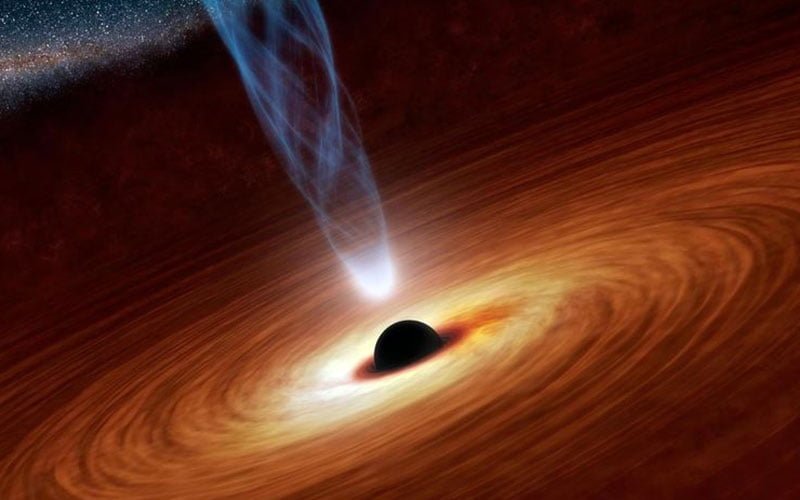
Black holes are fascinating astronomical objects that have captured the curiosity of scientists and the public alike. They are known for their immense gravitational pull, ability to distort space-time, and mysterious nature. In this article, we will explore some intriguing facts about black holes and shed light on their enigmatic characteristics.
A black hole is a region in space where gravity is so intense that nothing, not even light, can escape its gravitational pull. It is formed when a massive star collapses under its own gravitational force, resulting in an incredibly dense object with a gravitational field that defies our understanding of physics.
Black holes are formed through various processes, depending on the initial mass of the star. When a massive star exhausts its nuclear fuel, it undergoes a supernova explosion. If the remaining core is about three times the mass of the Sun or more, it collapses under gravity to form a black hole.
There are primarily three types of black holes: stellar black holes, intermediate black holes, and supermassive black holes. Stellar black holes have masses ranging from a few times that of the Sun to about 20 times that of the Sun. Intermediate black holes have masses between 100 and 100,000 times that of the Sun. Supermassive black holes, as the name suggests, have masses millions or even billions of times greater than the Sun.
The size of a black hole is determined by its event horizon, which is the point of no return beyond which nothing can escape. The event horizon is directly related to the mass of the black hole. The more massive the black hole, the larger its event horizon.
The event horizon of a black hole marks the boundary beyond which no information can be retrieved. Inside the event horizon lies the singularity, a point of infinite density where the laws of physics break down. Our current understanding of physics cannot fully explain the conditions that exist within a singularity.
When an object gets too close to a black hole, it experiences a phenomenon known as spaghettification. The intense gravitational pull of the black hole stretches the object into a long, thin shape resembling spaghetti. This process occurs due to the tidal forces acting on the object.
One of the intriguing consequences of black holes is time dilation. As an object approaches a black hole, time slows down relative to an observer far away from the black hole. This phenomenon occurs due to the extreme gravitational field near the black hole.
The black hole information paradox is a theoretical puzzle that arises from the principles of quantum mechanics and the nature of black holes. It questions the conservation of information when matter falls into a black hole, as the information appears to be lost forever.
Supermassive black holes reside at the centers of most galaxies, including our own Milky Way. These behemoths can have masses millions or even billions of times greater than the Sun. They play a crucial role in galaxy formation and evolution.
Black holes are the final stage of stellar evolution for massive stars. After a massive star exhausts its nuclear fuel, it undergoes a supernova explosion, leaving behind a dense core that collapses into a black hole.
Stephen Hawking proposed that black holes are not completely black but emit a form of radiation now known as Hawking radiation. This theoretical radiation is due to quantum effects near the event horizon and suggests that black holes can slowly lose mass over time.
Black holes can have interactions with other celestial objects. When matter from a nearby star falls onto a black hole, it forms an accretion disk, emitting strong X-rays and other forms of radiation. These interactions provide valuable insights into the nature of black holes.
Black holes can create ripples in the fabric of space-time known as gravitational waves. The detection of gravitational waves in 2015 confirmed a major prediction of Einstein’s theory of general relativity and opened up a new way to observe and study black holes.
Black holes have captivated the public’s imagination and have become a popular subject in science fiction and popular culture. More and more studies are on to know facts about black holes. From movies to books, black holes are often portrayed as mysterious gateways to other dimensions or as powerful cosmic phenomena that can manipulate time and space.
The study of more facts about black holes continues to be an active area of research. Scientists are using advanced telescopes, such as the Event Horizon Telescope, to observe black holes with unprecedented detail. Future missions and experiments aim to uncover more secrets about black holes and their role in the universe.
A: No, nothing can escape from a black hole’s event horizon, not even light.
A: Yes, black holes are astronomical objects found in space.
A: Black holes can slowly lose mass over time through Hawking radiation, but their complete disappearance is still a topic of scientific debate.
A: No, contrary to popular belief, a black hole cannot devour the entire universe. Its gravitational influence is limited to its immediate surroundings.
A: Black holes are detected through their interactions with nearby matter, such as the emission of X-rays from an accretion disk, or through the detection of gravitational waves.
The facts about black holes are awe-inspiring cosmic entities that challenge our understanding of the universe. Their immense gravitational pull, event horizons, and interactions with matter and space-time make them fascinating subjects of study. As our knowledge of black holes expands, we come closer to unraveling the mysteries they hold and gaining deeper insights into the workings of the universe.
Recommended other topics:










© InfoDoot. All Rights Reserved.